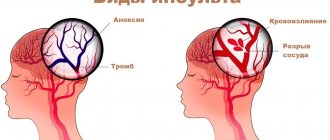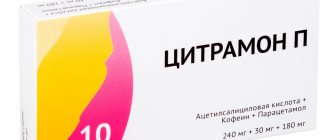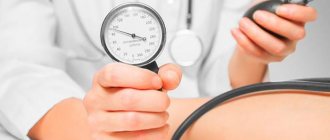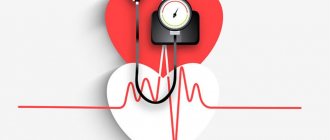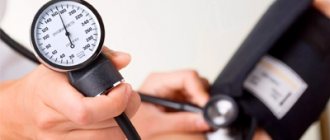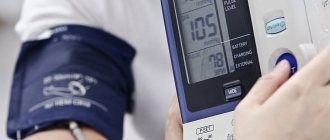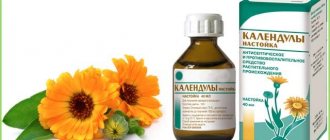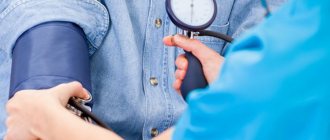The effect of a massage procedure on normalizing blood pressure
In hypertension, there is high blood pressure that can exceed 140/110. The opposite is true for hypotension, blood pressure that is 100/60 or less below normal, which is also a cause of feeling unwell.
With high blood pressure, a person experiences a sharp deterioration in health. May suffer from headaches, chest discomfort, tinnitus, and “flies” in the eyes. When hypertension and very high values occur, the consequences can be dire, leading to stroke, heart attack or even death. A characteristic symptom of low blood pressure is apathy, weakness, and fatigue.
Massage improves blood circulation and vascular tone, eliminates spasms in problem areas.
As a result, the patient’s condition and blood pressure levels are normalized. It is important that the massage is performed by a specialist familiar with the anatomy and massage techniques, otherwise the patient’s condition may worsen. For hypertension, massage should be performed only in acupressure mode, in accordance with the rules for working with the patient.
The effect of massage on hypertension
Acupressure at high pressure can be done, but you need to follow the technique. The massage therapist works on the points of the collar area and head, as a result relaxing signals are sent to the hypothalamus and the condition is normalized.
To relieve discomfort and stabilize blood pressure, two methods are used:
- classical;
- spot.
Massage has the following effect:
- the condition returns to normal;
- stops the development of hypertensive crisis;
- relaxes the nervous system;
- relieves the characteristic symptoms of hypertension;
- restores cerebral blood flow.
Important! The opinion of doctors about this method for normalizing the condition is clear - the technique is effective. As a result of relaxation of the nervous system, hypertensive attacks occur less frequently and become less pronounced. But it should be understood that it is impossible to completely cure hypertension without medications.
Head massage for low blood pressure and hypotension
Head massage is used to increase blood pressure by relieving spasm of blood vessels and improving blood circulation. This procedure is performed with the fingers of both hands simultaneously. Treatment begins at the earlobe and is performed in a circular motion from the base of the skull to the back of the head. The entire surface of the head is gradually processed.
Rules for preparing for massage
Each massage requires initial preparation of the patient for the procedure, the incorrect implementation of which can weaken the effect due to the reflex effect. The procedure is carried out in a specially designated place, during which the massage therapist stands.
The process looks like this:
- prepare the patient for the procedure by removing unnecessary clothing;
- the patient lies down on a special massage bed
- The specialist begins to gently stroke.
After such preparation, the massage therapist carefully moves on to the technique, massaging and rubbing certain areas, or stroking, depending on the specific purpose.
Therapeutic techniques used
Currently, there are several methods, each of which is applicable to both low and high pressure. An experienced physician should always be selected for the procedure and the procedure should be performed by a qualified physician.
It is worth inquiring in advance about the availability of special education, existing certificates, and studying reviews from previous clients.
Therapeutic massage and the possibility of prescribing it are determined by the attending physician depending on the clinical picture. The session can only be carried out if the patient’s condition is satisfactory.
All massage techniques are based on the impact on the patient’s body, causing reflexes of constriction or expansion of blood vessels.
Classical
This technique consists of stroking and rubbing. When the technique is performed correctly, the patient relaxes and the nervous system becomes less excitable. As a result, the load on the walls of blood vessels is relieved and blood pressure is normalized. After a classic massage, you can expect a reduction in headaches, dizziness, nausea and throbbing in the temples due to hypertension.
In the case of low blood pressure, the condition is stabilized by improving tissue nutrition and enriching them with oxygen.
The following movements are used:
- strokes - help improve tissue metabolism, can be very different, including intermittent;
- rubbing - relieves tension and, depending on the intensity and strength of movements, stimulates or calms the nervous system;
- kneading - helps to activate the movement of blood and lymph, can be longitudinal or transverse
- vibrations can affect both deep layers and internal organs.
The classical technique always requires a certain sequence of sections. Starting from the cervical collar area and ending with the abdominal area.
Spot
The procedure is focused on specific points. In most cases, they are responsible for or can influence a specific organ of the body. This technique requires extensive knowledge and experience working with patients.
When performing acupressure, it is important to follow the following rules:
- accurately determine the point of impact;
- apply pressure and vibration;
- procedure duration is from 30 to 40 minutes;
- The session duration varies from 3 to 5 seconds.
You can also massage active points on the neck, head and legs. If done correctly, you will feel a pleasant warmth at the pressure point.
Execution method
The therapist pays special attention to areas of the body that are directly related to the course of nerves. It also affects the vasodilation centers, which include the head, neck and popliteal region. In most cases, attempts are made to alternate these areas.
Before the procedure begins, the specialist will measure your blood pressure, and if the values are satisfactory, a session will be scheduled.
If the blood pressure is too high or too low, the session is postponed. Stable high deviations from the norm are the reason for refusing physical therapy and require therapeutic intervention.
Effective methods require 1 minute of exposure to each of them. In the presence of high blood pressure, the duration of the physiological procedure should not exceed 15 minutes. Massage is carried out regularly, the number of sessions is determined by the patient’s doctor. Patients are prescribed an average of 15 procedures. It is important to use the services of a qualified specialist and not miss appointments. Even if there is a strong result, you should not immediately abandon drug treatment.
For the collar area
The patient receiving the massage sits on a chair with his head resting on his crossed arms located on the table. This pose allows you to relax the muscles of your back and neck as much as possible. Movements are made only up and down.
This technique consists of:
- stroke;
- trituration;
- spiral movements;
- imitation of chopping and sawing movements.
When performing massage movements, the impact force is on average 3 times lower compared to other areas. The massage ends with light strokes.
For the back
Massage relieves back spasms and promotes overall well-being. Movements are made from the neck down to the corner of each shoulder blade.
The sequence of movements is as follows
- Rubbing is performed in a straight line, then spiral movements are imitated;
- Knead the area with your fingertips;
- manipulation of the spinous processes;
- the first step is repeated.
The session ends with light stroking movements.
For the neck
Kneading the neck relieves spasms and improves blood circulation, which leads to normal blood pressure. The specialist strokes the area around the appendix and lymph nodes, then moves to the pectoral muscle, sternum and ribs.
Massage the chin and collarbone. The work uses:
- traditional strikes;
- tapping movements;
- trituration;
- creating vibration.
The massage ends with stroking movements.
For the head
Massage during the procedure is carried out in a lying position, with your head resting on your hands during the session. The movements begin from the top of the head, moving to the back of the head, forehead and temples.
The following movements are used in this process:
- light stroking with open fingers;
- imitation of zigzags and circles with your fingertips;
- light stroking with open fingers, imitation of zigzags and circles with fingertips, or light rubbing.
After completing the massage, the patient is turned and the forehead area is stimulated from the midline to the temple. The procedure ends with circular massage movements on the temples.
Symmetrical points
| Point No. 3 | Located on the lower leg, approximately 12-15 cm above the inner ankle. Massage with light stroking on both legs at the same time. |
| Point No. 4 | It is located on the inside of the wrist, on the side of the thumb, between the tendons. Massaged with the thumb of the opposite hand simultaneously with point No. 5, alternately left and right. |
| Point No. 5 | Located on the outside of the wrist, between the tendons, in the depression formed when the hand is extended. Massaged with the index or middle finger of the opposite hand simultaneously with point No. 4, alternately left and right. |
| Point No. 6 | Located on the outside of the wrist, in a depression that is in line with the middle finger. Massaged with the index or middle finger of the opposite hand simultaneously with point No. 7, alternately left and right. |
| Point No. 7 | Located on the inside of the wrist, between the tendons, in line with the middle finger. Massaged with the thumb of the opposite hand simultaneously with point No. 6, alternately left and right. |
| Point No. 8 | Located on the forearm, at the end of the fold of the elbow, in line with the thumb. Massaged alternately on each side. |
| Point No. 9 | It is located on the inside of the foot, in the depression located above the heel bone. Massaged simultaneously on both sides. |
| Point No. 10 | It is located on the foot in the cavity under the inner malleolus. Symmetrical points are massaged simultaneously. |
| Point No. 11 | Located on the middle finger, on the side facing the index finger, 3 mm below the angle of the nail hole. Massaged alternately on the left and right. |
| Point No. 12 | Located on the wrist, on the inside, in a recess on the line with the little finger. Massaged on each hand in turn. |
| Point No. 13 | It is located on the border of the sole and the back of the foot from the inside. Massaged alternately. |
| Point No. 14 | Located on the outside of the forearm, on its border with the wrist, at the styloid process of the radius. Massaged alternately. |
| Point No. 15 | It is located on the lower leg, on its outer side, downward from the kneecap. Massaged simultaneously on both legs. |
| Point No. 16 | Located along the upper edge of the pubic bone 1 cm away from the midline. Massaged on both sides simultaneously. |
| Point No. 17 | Located in the subclavian fossa on both sides of the sternum. Massaged at the same time. |
It is not necessary to massage all points.
If you find that massage of certain points gives the greatest effect, then you can limit yourself to only them. If you find an error, please select a piece of text and press Ctrl+Enter.
Self-massage for hypotension
Self-massage can be done at home if there are no serious health hazards. This method is effective when it is necessary to increase blood pressure without resorting to outside help. The massage technique consists of carrying out a general direction of influence.
Particular attention is paid to the lower extremities, abdominal area and lumbosacral region.
The following movements are used to increase pressure:
- intermittent beats;
- hits at a fast pace;
- active mixing;
- intermittent oscillations.
Low pressure massage should be intense and increase tension. A daily morning massage of the feet, neck and arms is recommended, which “activates” the circulatory processes and the functioning of vital systems. Physical therapy to strengthen the body, which will increase circulation and improve blood vessel tone, can help improve the effectiveness and efficiency of the procedure.
Contraindications
Before conducting a massage course, you must consult with your doctor and give consent to its implementation. The form of the disease often determines the possibility of using massage for hypertension. The primary stage is typical for 95% of cases, often the pathology is caused by stress and addiction. It is with this form of the disease that massage will be effective.
In the secondary form, the physiological procedure is ineffective or can provoke an even greater increase in blood pressure.
Contraindications for prescribing a session:
- hypertensive crisis;
- advanced stage of arterial hypertension;
- tendency to bleeding, problems with blood clotting;
- tuberculosis;
- tumor formations;
- heart pathology requiring surgical intervention.
Disorders of the digestive system may be a contraindication to massage procedures. Physical therapy cannot be performed in the presence of rashes, pathological or purulent skin diseases. Mental disorders, depression or fever are also prohibited.
What is hypertension
Hypertension is a disorder of the vascular system. Since there are many reasons for the development of pathology, every second resident of Russia is susceptible to this disease. It is important to start treatment when the first signs of hypertension are detected; in this case, the disease is easy to cure.
People with the following factors are at risk:
- elderly age;
- presence of hypertension in close relatives;
- bad habits;
- excess body weight;
- associated diseases.
Many patients are interested in the question: is it possible to do massage under pressure?
Different massage techniques have different effects on the body, so a qualified doctor will recommend treatments for both lowering and increasing blood pressure. But it is important to note that the procedure is effective only in the early stages of the disease, when the maximum pressure is 160/100. If the tonometer reading is higher, drug therapy will be required.
